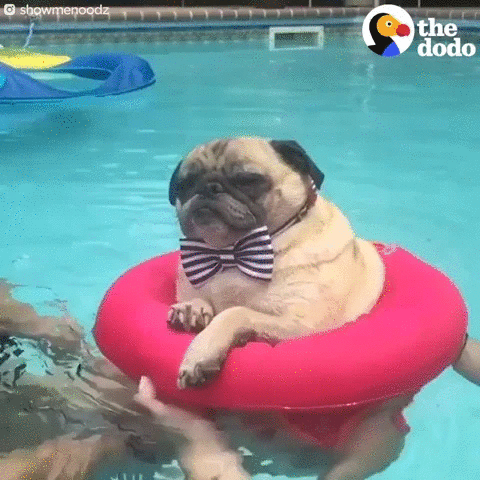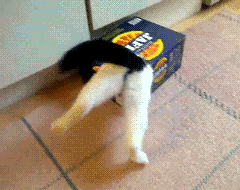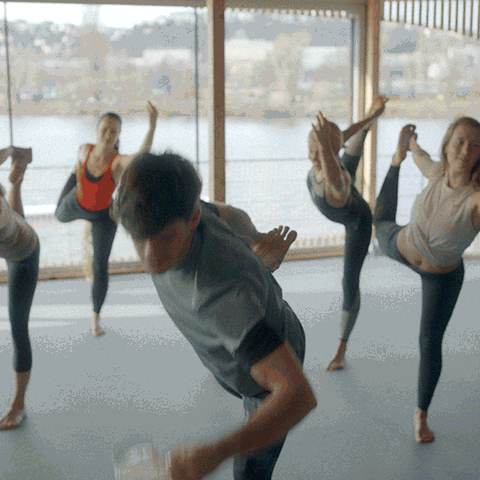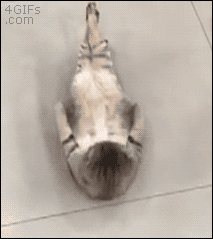Stenosis means a narrowing of a canal, so spinal stenosis means…..narrowing of the spinal canal. Or the foraminal spaces. Or really any space, but usually it’s the spinal canal or foraminal spaces.
Stenosis can be central (affecting the main spinal cord), lateral (affecting the nerve as it exits the spinal cord), or foraminal (affecting the nerve as it moves through the foramina).



Causes of Spinal Stenosis
Osteoarthritis
Osteoarthritis is the breakdown of cartilage and/or the underlying bone. So if this happens in the spine, the little holes on the side get smaller and the nerve roots that come out of the holes kind of freak out

Osteophytes
These are another cause of stenosis. Osteophytes are commonly known as bone spurs, which is weird because they’re not pointy at all.

But still they can cause damage, since they are growths which can narrow spaces…
Facet joint osteophytes can contribute to lateral and central lumbar stenosis and subsequent nerve root impingement.
O’Sullivan. Physical Rehabilitation pg 1048.
Osteophytes are usually brought on by osteoarthritis, so when it comes to stenosis, OA is a double whammy. Osteophytes are an outgrowth of fibrous, bony, or cartilaginous tissue. The way they are formed and the reasons for them are not well understood. But we do know they come with aging, degeneration, injury, etc. Many times they are completely asymptomatic. But many times they cause pain in the joint, and in the spine they can contribute to stenosis and nerve compression or irritation.
Other Causes of Stenosis
Spinal Stenosis can be caused by anything that would narrow the spaces in the spine, like DDD, DJD, disc injuries or collapsed disc, spondylolisthesis, a congenital abnormality, etc.
The narrowing may be caused by soft tissue structures, such as a disc protrusion, fibrotic scars, or joint swelling; by boney narrowing as with spondylitic osteophyte formation or spondylolisthesis; or by faulty posture. With progression, neurological symptoms develop. Extension exacerbates the symptoms
Kisner & Colby. Therapeutic Exercise pg 444
Nerve roots emerge from the spinal canal and traverse the foramina of the spine, where they can become impinged as a result of various pathologies of the spine that reduce the space in the foramina, such as degenerative disc disease (DDD), degenerative joint disease (DJD), disc lesions, and spondylolisthesis. With reduced spinal canal or foraminal space (stenosis), extension, side bending, or rotation to the side of the stenosis further decreases the space where the nerve root courses and may cause or perpetuate symptoms.
Kisner & Colby. Therapeutic Exercise pg 376
So a patient may be experiencing pain with extension, side bending, or rotation to the side of the stenosis because those motions would decrease the foraminal space! Flexion tends to decrease the symptoms.
Of course, many patients with stenosis can be completely asymptomatic:
Multiple computed tomography (CT) and magnetic resonance imaging (MRI) studies show high rates of disk herniation and spinal stenosis in persons without symptoms.16,213,214 Furthermore, patients with central sensitization may have a positive response to many pain provocation tests due to hyper- algesia and allodynia.
OSullivan. Physical Rehabilitation pg 1147
Examination of Patient with Stenosis
A patient with stenosis may present with back pain, or peripheralized symptoms such as burning, numbness, or tingling in extremities especially the legs or in the buttocks. The patient will prefer flexion and exhibit pain with extension. They may experience pain with walking or standing, and the pain is relieved by prolonged rest, not immediate rest. It has a slow onset, and can be bilateral or unilateral, but is more commonly bilateral. It usually occurs at a higher rate with age, it can occur anywhere in the spine, and it can usually be diagnosed with diagnostic imaging.
For stenosis the following tests would most likely be positive:
- The foraminal compression test, aka Spurling’s Test
- Maximum cervical compression test
- Jackson’s compression test
- Valsalva test (tbh I had no idea we had patients do this until right now)
- Bicycle test of Val Gelderen
- Stoop test
- Straight leg raise
- Crossed straight leg raise (basically pain/reproduction of symptoms when you raise the contralateral or uninvolved leg)
In addition, there are many outcomes measures for stenosis or back pain that a PT could use including…
- Swiss Spinal Stenosis Questionnaire
- SF-36 Bodily Pain and Physical Function
- Oswestry Disability Index
- Roland-Morris Disability Questionnaire FLS-25 in patients with LSS is similar to that of commonly used low back pain scales in patients with low back pain. Concerning the clinically meaningful response of the FLS-25 after conservative therapy, we would propose an absolute change score of 15 points per 100 points.
- Zurich Claudication Questionnaire
Non-PT Treatments for Stenosis
PT is super indicated for stenosis, but before we get into all that good stuff, some of the non-PT treatments for stenosis are pain meds like N-SAIDs, corticosteroid injections, nerve blocks, and surgery.
PT for Stenosis
Any movement that peripheralizes the symptoms signals a movement that is contraindicated during the acute and early subacute period of treatment.
Kisner & Colby. Therapeutic Exercise pg 457.
Since stenosis usually causes pain with extension, treatment in the early stages emphasizes flexion, in order to increase the size of the foraminal spaces and minimize nerve root irritation.
Traction generally is indicated for stenosis. You can do very gentle Grade I or II mobs or gentle gliding. With stenosis you may need to use a little bit more strength to open up the foraminal spaces even more. (You would not do traction on a patient with RA). Or you could try a more independent form of traction called positional traction. In this case, positional traction would be having the patient sidebend away from the pain and rotate towards the pain. Of course, since stenosis usually presents bilaterally, who knows? This depends on how the patient experiences the pain as is everything we do in PT 🙂
Treatment in the Acute Phase
In the acute phase, a patient can try a collar or brace, but as soon as the acute s/s decrease, they should nix it so their muscles can regain dynamic control and not be dependent. Also there is something to be said for the added security of a brace or collar to provide that stability and coziness that gives a psychosomatic component to muscle happiness. In a word: proprioception.
As with any spine pathology, you want to do the big 6 (idk I just named them that).
1) educate yo patient
2) decrease acute symptoms through modalities/mobs/manips/massage/many other things….see what I did there?
3) spine and pelvis position/movement awareness.
4) teach posture.
5) get those stabilizing muscles under neuromuscular control!
6) Teach safe ADL-doing, and then do IADLs

Treatment in the Subacute Phase
1) educate yo patient. 2) awareness of spine alignment in all positions! 3) Get more mobility in anything that needs it – especially spastic muscle or tight fascia 4) More neuromuscular control 5) Cardiopulm endurance – not sure why this is important for treating the spine but whatevs. 6) Stress relief/relaxation – super important for spine! For whatever reason, we as humans tend to carry stress in the muscles of our spine. That, coupled with the very frequent sitting we do ===> spine problems. 7) Teach safe body mechanics!
Treatment in the Return to Function Phase
1) Spinal control for high-intensity or repetitive activities. 2) Continue to increase that mobility where needed 3) Work on trunk strength in more advanced positions/speeds to improve muscle performance. 4) Improve cardiopulm endurance. 5) Make stress relief a habit. 6) Teach how to safely progress high-intensity activities 7) Teach healthy exercise habits so they can continue on themselves 🙂
PT Treatment for Stenosis Summarized
In essence we want to minimize pain and symptoms through modalities, massage, traction, and rest as needed; we need to stretch the muscles of the spine through LTRs, child’s pose, downward dog if possible; we need to strengthen the muscles through trunk stabilization through various positions (bird dog, reaching, sit to stands or squats, core strengthening, etc.); we need to help progress the patient to more advanced exercises if possible; and we need to educate the patient on postural control, relaxation, and continuation of exercise post-treatment.

Shout-Outs
Many thanks to my homies O’Sullivan and co, Kisner & Colby & co, and Magee and co for their bomb-ass books on PT 🙂
Pretty much the whole section on treatment above came from the chaper on Spine Management Chapter in Kisner & Colby, so I highly recommend you read it!
Thanks to the following for the images:
By Jmarchn – Modified from File:718 Vertebra.jpg, CC BY-SA 3.0, https://commons.wikimedia.org/w/index.php?curid=45612366